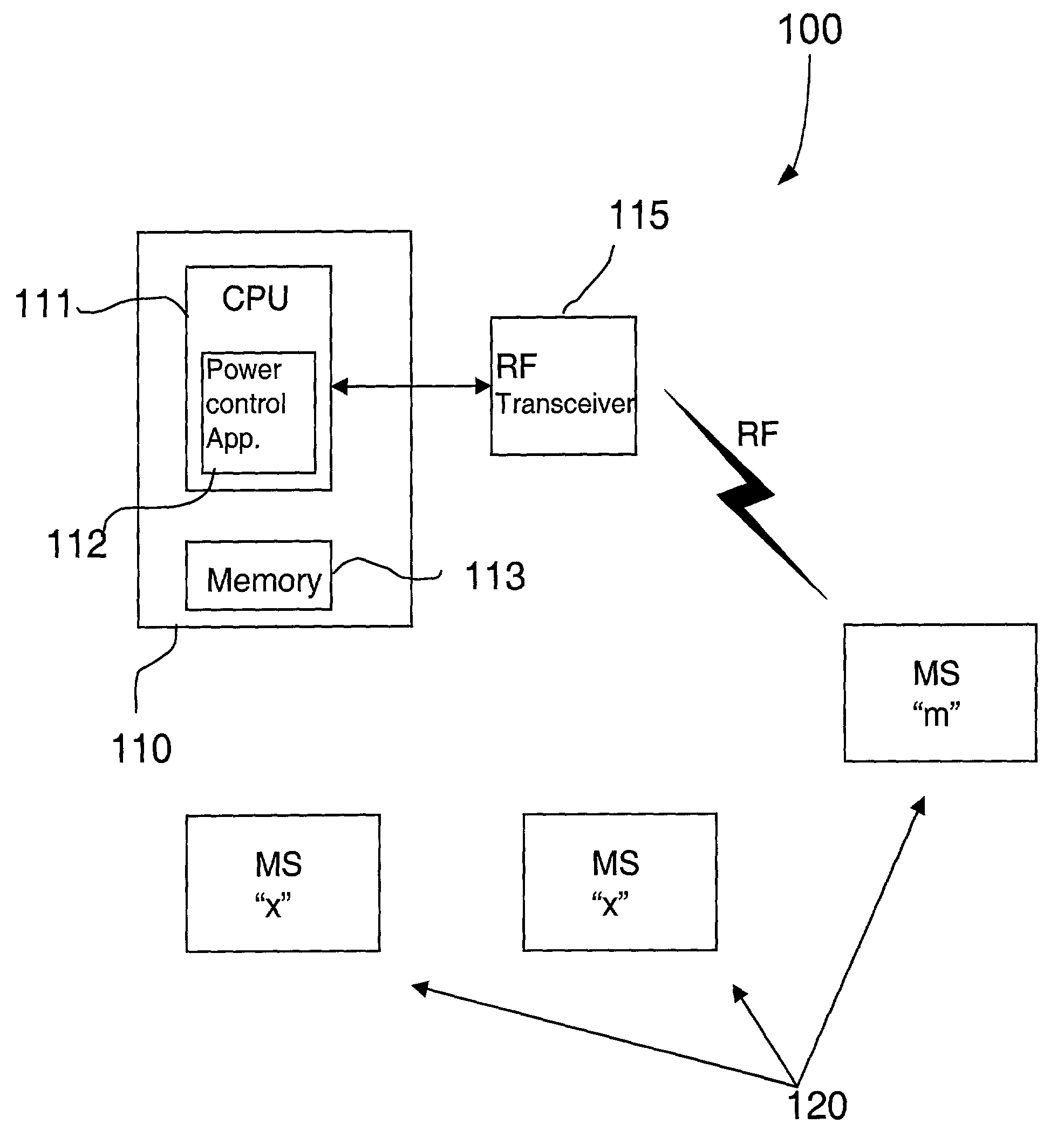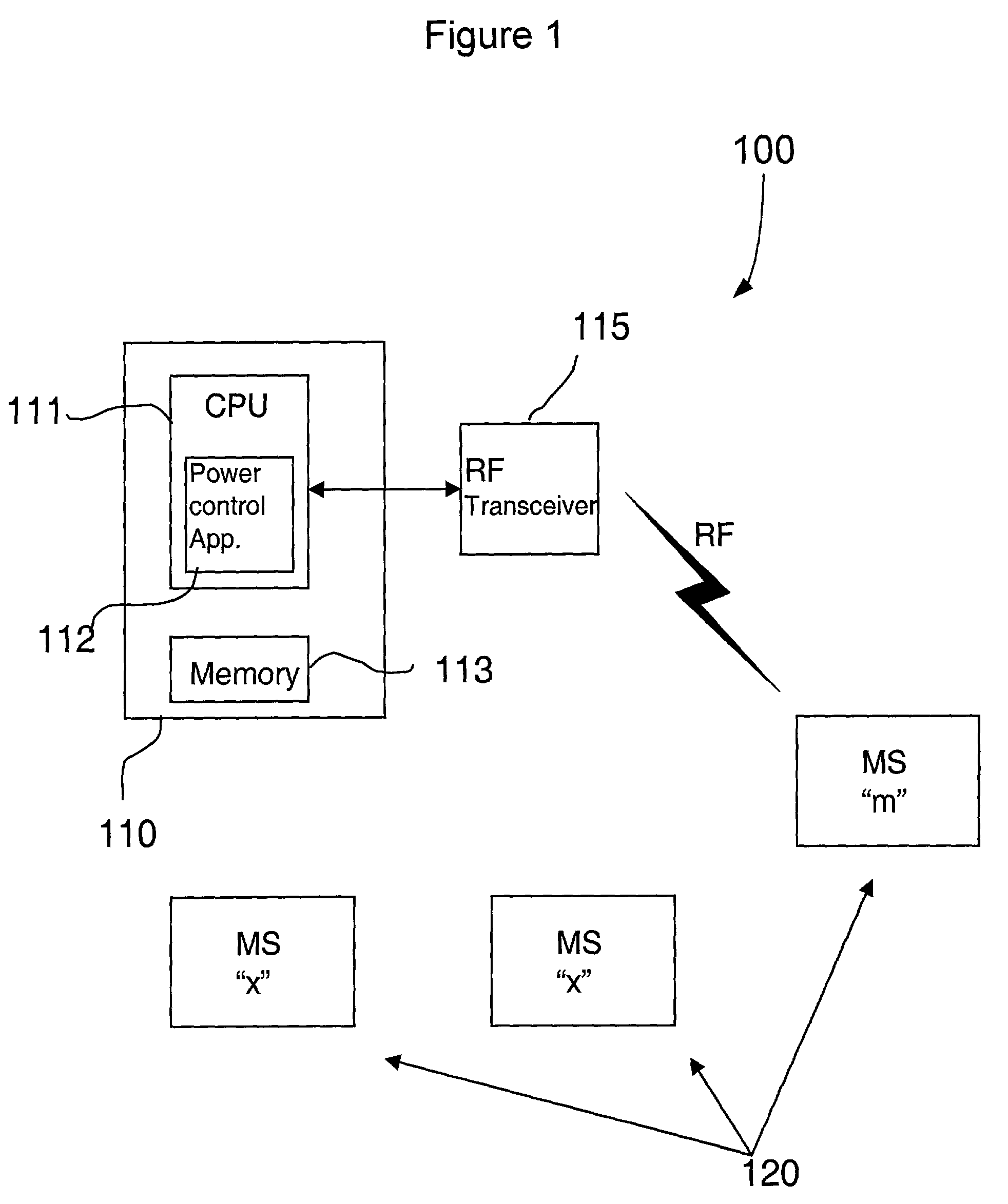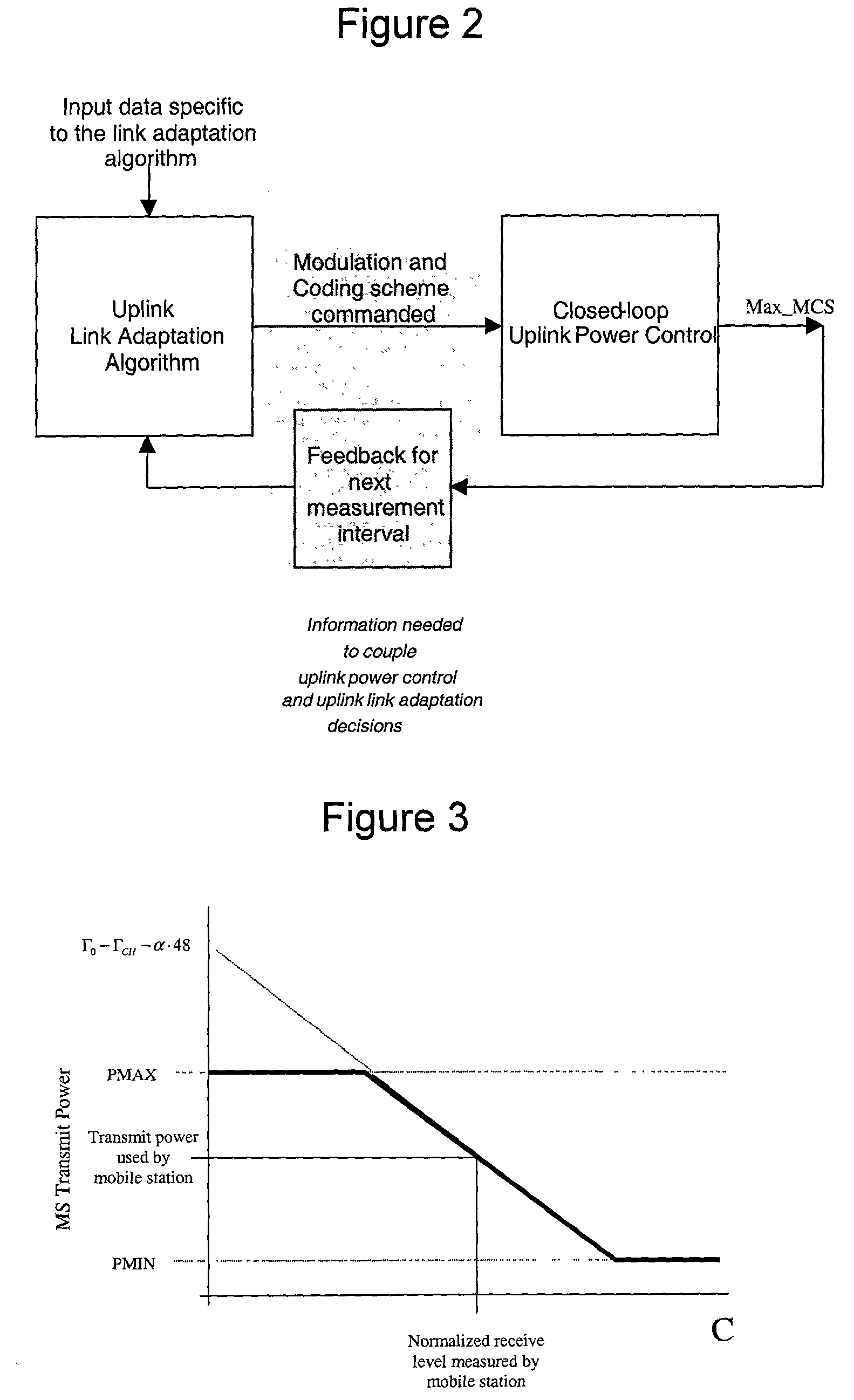Uplink power control algorithm
a power control algorithm and power control technology, applied in power management, transmission monitoring, wireless communication, etc., can solve the problems of not being corrected, airlink errors can be detected, and gprs's rlc/mac layer has difficulty in coping with time-varying channels
- Summary
- Abstract
- Description
- Claims
- Application Information
AI Technical Summary
Problems solved by technology
Method used
Image
Examples
Embodiment Construction
of Variables Used in FIG. 9 Explanation of variables used: S.sup.m = set of time slots being used by UL TBF; note that S.sup.m has only one element if TBF is single-slot. S.sub.old.sup.m: this relates to TBF reassignment. We use S.sub.old.sup.m to denote the set of time slots which were being used by the TBF before reassignment. N.sub.tot: used in Quick ACK mode; denotes the total number of RLC blocks received since the TBF was established. k.sub.tot: also used in Quick ACK mode; denotes the total number of RLC blocks Out of N.sub.tot which were received incorrectly. FN.sub.new(s) = all UL RLC blocks received on time slots after FN.sub.new(s) are assumed to have been transmitted using the updated value of .GAMMA..sub.CH(s). Quick_ACK_mode: when set, it denotes that the ULPCA is in the Quick ACK mode. MCS.sub.LA: set to be 2 at the beginning of a TBF. will be the output of the link adaptation algorithm to be used by the power control algorithm during the transmission of a TBF. MAX_MC...
PUM
 Login to View More
Login to View More Abstract
Description
Claims
Application Information
 Login to View More
Login to View More - R&D
- Intellectual Property
- Life Sciences
- Materials
- Tech Scout
- Unparalleled Data Quality
- Higher Quality Content
- 60% Fewer Hallucinations
Browse by: Latest US Patents, China's latest patents, Technical Efficacy Thesaurus, Application Domain, Technology Topic, Popular Technical Reports.
© 2025 PatSnap. All rights reserved.Legal|Privacy policy|Modern Slavery Act Transparency Statement|Sitemap|About US| Contact US: help@patsnap.com



